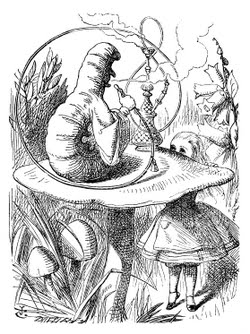
Semantic ambiguity
There are two types of ambiguity: Genuine ambiguities, where a sentence really can have two different meanings to an intelligent hearer, and "computer" ambiguities, where the meaning is entirely clear to a hearer but a computer detects more than one meaning. Genuine ambiguity is not a serious problem for NLP problems; it's comparatively rare, and you can't expect computers to do better with natural language than people. Computer ambiguity is a very serious problem; it is extremely common, and it is where computers do much much worse than humans.
Lexical ambiguity
Words have multiple meanings."I saw a bat."
bat = flying mammal / wooden club?
saw = past tense of "see" / present tense of "saw" (to cut with a saw.)
Syntactic ambiguity.
A sentence has multiple parse trees.Particularly common sources of ambiguity in English are:
Phrase attachment. "Mary ate a salad with spinach from Califonia for lunch on Tuesday."
"with spinach" can attach to "salad" or "ate"
"from California" can attach to "spinach", "salad", or "ate".
"for lunch" can attach to "California", "spinach", "salad", or "ate"
and "on Tuesday" can attach to "lunch", "California", "spinach", "salad" or "ate".
(Crossovers are not allowed, so you cannot both attach "on Tuesday" to "spinach" and attach "for lunch" to salad. Nonetheless there are 42 possible different parse trees.)`
Conjunction. "Mary ate a salad with spinach from Califonia for lunch on Tuesday and Wednesday."
"Wednesday" can be conjoined with salad, spinach, California, lunch, or Tuesday.
Noun group structure English allows long series of nouns to be strung together using the incredibly ambiguous rule NG -> NG NG. E.g. "New York University Martin Luther King Jr. scholarship program projects coordinator Susan Reid". Even taking "New York" "Martin Luther King Jr." and "Susan Reid" to be effectively single elements, this is 8 elements in a row, and has 429 possible parses.
Semantic ambiguity.
Even after the syntax and the meanings of the individual words have been resolved, there are two ways of reading the sentence. "Lucy owns a parrot that is larger than a cat", "a parrot" is extenstensionally quantified, "a cat" is either universally quantified or means "typical cats." Other examples:"The dog is chasing the cat." vs. "The dog has been domesticated for 10, 000 years." In the first sentence, "The dog" means to a particular dog; in the second, it means the species "dog".
"John and Mary are married." (To each other? or separately?) Compare "John and Mary got engaged last month. Now, John and Mary are married." vs. "Which of the men at this party are single? John and Jim are married; the rest are all available."
"John kissed his wife, and so did Sam". (Sam kissed John's wife or his own?)
Compare "Amy's car", "Amy's husband", "Amy's greatest fear", "Michaelangelo's David" etc.
Anaphoric ambiguity.
A phrase or word refers to something previously mentioned, but there is more than one possibility."Margaret invited Susan for a visit, and she gave her a good lunch." (she = Margaret; her = Susan)
"Margaret invited Susan for a visit, but she told her she had to go to work" (she = Susan; her = Margaret.)
"On the train to Boston, George chatted with another passenger. The man turned out to be a professional hockey player." (The man = another passenger).
"Bill told Amy that he had decided to spend a year in Italy to study art."
"That would be his life's work." (That = art)
"After he had done that, he would come back and marry her." (That = spending a year in Italy)
"That was the upshot of his thinking the previous night" (That = deciding)
"That started a four-hour fight." (That = telling Amy)
In many cases, there is no explicit antecedent.
"I went to the hospital, and they told me to go home and rest." (They = the hospital staff.)






 Ambiguity of information, in words, pictures, or other media, is the ability to express more than one interpretation. It is generally contrasted with vagueness, in that specific and distinct interpretations are permitted (although some may not be immediately apparent), whereas with information that is vague it is difficult to form any...
Ambiguity of information, in words, pictures, or other media, is the ability to express more than one interpretation. It is generally contrasted with vagueness, in that specific and distinct interpretations are permitted (although some may not be immediately apparent), whereas with information that is vague it is difficult to form any...